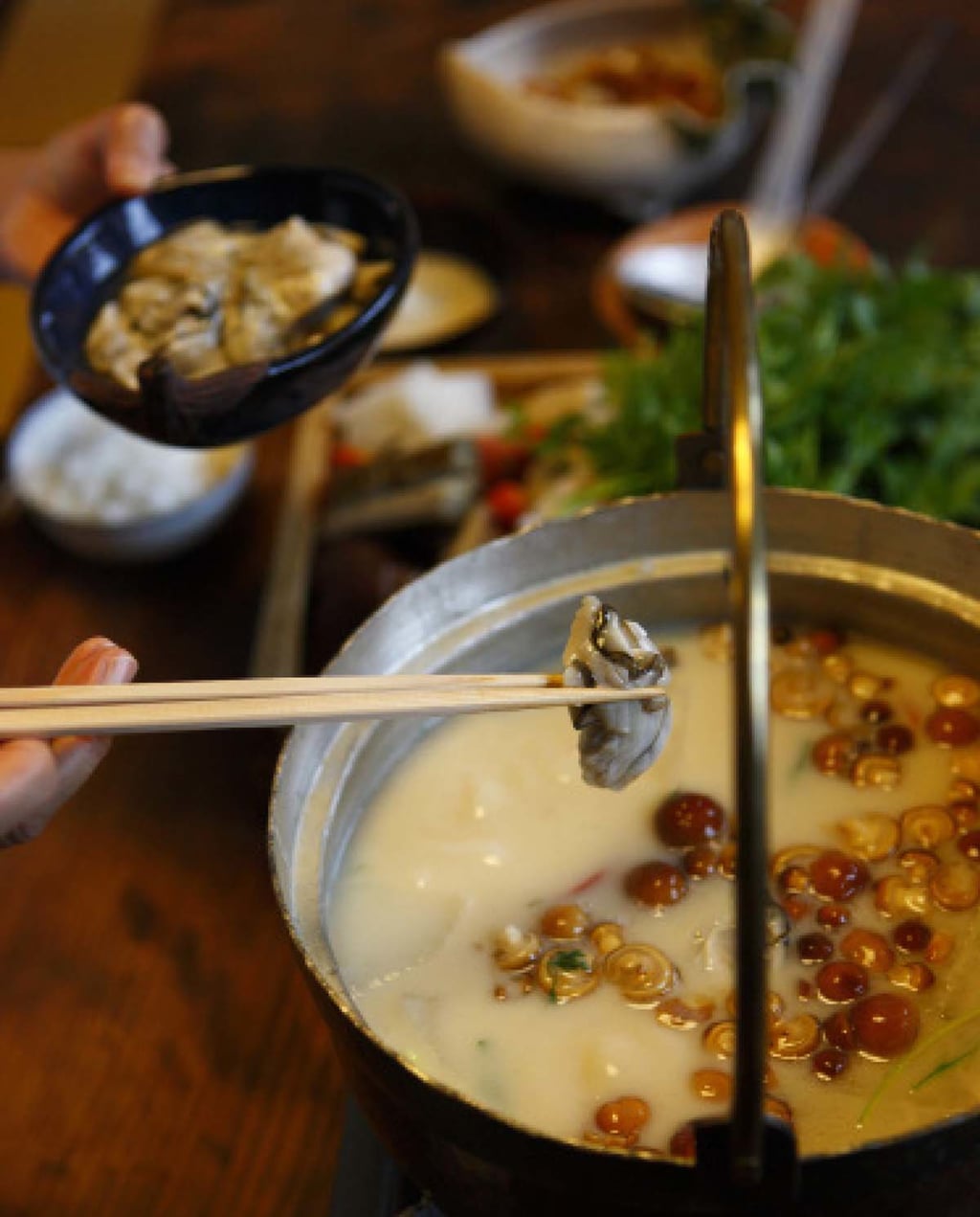Tadashi Ono and Harris Salat’s Oyster Hot Pot
In the Hiroshima region, oysters are eaten cooked rather than raw, and with miso to accentuate their strong flavour.

Ten Speed Press
For a country renowned for its raw fish, oysters, surprisingly, tend to be eaten cooked in Japan. ‘The idea is that cooking them brings out their briny, distinctive flavour that you can’t taste if you eat them raw and cold’, explains food journalist Harris Salat in his book Japanese Hot Pots, written with his associate, chef Tadashi Ono.
Here, the pair share their recipe for oyster hot pot, a speciality from the Hiroshima region. ‘This oyster recipe is an old custom in Hiroshima, a region with a history of cultivating these molluscs that dates back hundreds of years, and an equally long tradition of producing miso. Marrying together oysters and miso, two ingredients with a strong flavour, like they do in Hiroshima, creates a very appealing balance of flavours’, explains Harris Salat.
Japanese Hot Pots features salty broths and healthy ingredients that are easy to get hold of, such as seafood, poultry, green vegetables, roots, mushrooms, and noodles. Cooked in classic receptacles, they require very little preparation and no special equipment.
Serves 4
Ingredients
80 ml hatcho miso
60 ml aka miso
2 tablespoons saikyo miso
250 ml sake
1 l dashi
225 g napa cabbage, sliced
30 g harusame, soaked in water for 15 minutes
1/2 pack (about 225 g) firm tofu, cut into 8 pieces
100 g shimeji mushrooms, trimmed and pulled apart
1 negi, sliced on an angle into 5-cm pieces
2 dozen large raw oysters, shucked, cleaned, and shells discarded
480 g shungiku leaves, stemmed
Sansho, for accent
Method
Prepare the broth by combining the Hatcho miso, aka miso, saikyo miso, sake, and dashi in a bowl, whisking to blend well; reserve.
Place the cabbage on the bottom of a hot pot. Add the harusame, tofu, shimeji mushrooms, and negi on top of the cabbage, arranging each ingredient in a separate, neat bunch. Pour in the reserved broth.
Cover the hot pot and bring to a boil over high heat. Decrease the heat to medium and simmer for five minutes. Uncover the pot, add the oysters in the centre, and the shungiku leaves in a pile next to them. When the liquid returns to a boil, simmer until the oysters cook through, for three to five minutes.
Transfer the hot pot to the dining table. Serve the ingredients together with the broth in small bowls, seasoning with the sansho.
Suggested shime: Udon
Japanese Hot Pots (2009), by Harris Salat and Tadashi Ono, is published by Ten Speed Press.
Harris Salat and Tadashi Ono have written other cookbooks together, such as Japanese Soul Cooking and The Japanese Grill.

Ten Speed Press
TRENDING
-
A House from the Taisho Era Reveals Its Secrets
While visiting an abandoned building, Hamish Campbell discovered photographs the owner had taken of the place in the 1920s.

-
The Taboo-Breaking Erotica of Toshio Saeki
The master of the 1970s Japanese avant-garde reimagined his most iconic artworks for a limited box set with silkscreen artist Fumie Taniyama.

-
With Meisa Fujishiro, Tokyo's Nudes Stand Tall
In the series 'Sketches of Tokyo', the photographer revisits the genre by bringing it face to face with the capital's architecture.

-
Masahisa Fukase's Family Portraits
In his series ‘Family’, the photographer compiles surprising photos in which he questions death, the inescapable.

-
Hajime Sorayama's Futuristic Eroticism
The illustrator is the pioneer for a form of hyperrealism that combines sensuality and technology and depicts sexualised robots.





